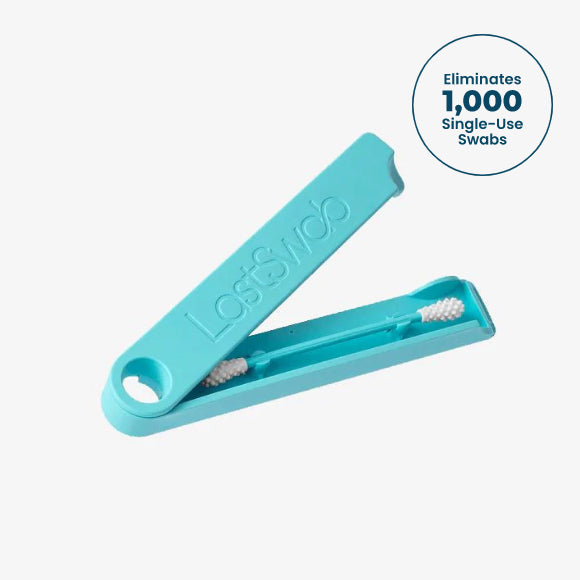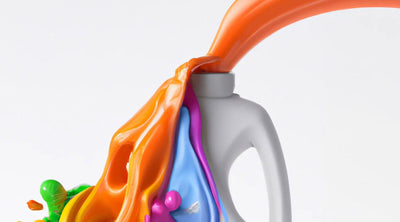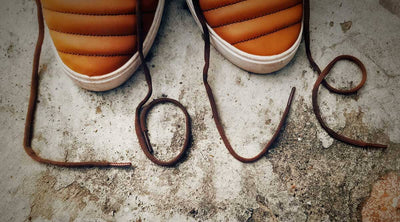Why Reduce comes before Reuse and Recycle
March 23, 2020Reduce. Reuse. Recycle. It’s safe to say most of us have heard this at least once or twice.
A lot about this phrase makes us believe each carries similar weight. They have similar spelling lengths, they all start with R’s, like equal pillars of a sustainability system. 33.333 percent. In this article we’ll talk about why this isn’t the case.
As we’ve touched on in various articles, different materials, actions, and products have different footprints on the earth. This especially applies to Reduce vs Reuse vs Recycle. While all actions are good for the planet, the three R’s are actually listed in order of priority.
Surprised? Feel deceived? Wondering why recycling bins (or the push for them) are so popular compared to zero waste? Let's get into it.
What is Reduce, Reuse, and Recycle, specifically?

So, if we were to explain the three R’s so there is no confusion, it could look like this:
First reduce your consumption. For the things you can’t reduce, reuse or repurpose them instead of throwing them away. And if you have done those first two things and something needs to be wasted...recycle them when possible.
Reduce

This means decreasing our unnecessary consumption levels in any way possible. It doesn’t mean drink less water or eat less healthy food, those things would be considered necessary and essential. Obvs.
Reduce means using a reusable bag, reusable cotton round, or tissue instead of a single use one. It means reducing unnecessary consumption of things like clothes, knick knacks, or packaging for example. It means reducing the consumption of food which is isn’t necessary for our health and is also bad for the environment.
This is what the zero waste movement is all about. And the things zero-wasters do end up using are usually reusable.
Its main focus is switching to reusable alternatives or even get rid of the need/desire for the thing altogether. Although, it does dive into recycling and repurposing a bit as well. But the further we go from reducing the further we go from “zero waste”.
Liberating fact: we will never be truly zero waste.
Reuse

Reuse can look like reusing a water bottle or zip loc bag or it could look like purchasing something used instead of new. #thrifting!
When we reuse something, the resources required to make the product are then spread out over every use instead of just one. Or, resources could be passed onto you when you buy something used, or you can pass it onto someone else. This is opposed to buying a new product with a new set of resources consumed. Yippee!!
It’s easy however, to buy unnecessary things when we know we’ll reuse or donate them after. This still demands unnecessary resources and is rather unsustainable. Buying used is also dependent on lots of people buying new.
Reuse extended

I’ll also include repurpose in reuse, because we are reusing the materials!
When a product has accomplished its intended use and we don’t need it or can’t use it anymore, we have two options. We can either throw it away or can find a different use for it.
Careful though, it’s easy to get caught up in repurposing something even when you don't need the new repurposed thing. This can add to a lot of clutter in our lives. This again, is why reduce is most important. Then we have less things to worry about repurposing or reusing.
Recycle

Recycling refers to taking a material from a product and turning it into a new product.
This requires a process often done on a large scale.
Recycling can save resources by providing a certain raw material for a new product. Plastic, aluminum, and glass being the most popular.
While recycling saves materials, the process itself also requires energy and resources.
We have to ship the recycled products, process them, and then ship the finished product again, all while disposing of the waste.
Not to mention, recycling is incredibly confusing when the general public has to separate it themselves. Reducing on the other hand...not so confusing. This all starting to make sense?
Why reduce comes first

In summary, the real phrase should be five R’s instead of three. It should be Reduce Reduce Reduce then finally, Reuse and Recycle, in order to emphasize the importance of reducing waste. But why does reduce shine so bright?
Demand

With any business, the demand of a product determines how much of a supply it should have. When we are purchasing a product, this adds to the company’s demand which tells it to make more.
So if we are buying a bunch of clothes, using a bunch of packaging, or a bunch of to-go coffee cups, this creates a larger demand of products which require more extraction of resources.
By reducing our consumption of these things, we are reducing the amount of demand which a business or industry has to responds to. Industries are already noticing this for instance in dairy and petroleum based plastics.
Because it’s more effective than the alternatives

When we buy a product with the intention of reusing, repurposing, or recycling it, there are some flaws we need to be mindful of.
When we are planning to reuse a product, this is of course much better than contributing to the single use demand of an alternative. However, this still contributes to resource use and some level of pollution. While we will never be 100% pollutant free, if this product is unnecessary in our lives then it is better to be reduced instead.
When we choose to recycle a product, we are also contributing to the demand of it. Because even if we recycle it, we will probably be buying it brand new again and again.
Also, once the product is ready to be recycled, it isn’t as efficient as we think. A new product isn’t just magically created through the raw materials, although that would be pretty sweet. It requires energy and resources to recycle things.
For the most part, recycling isn’t a sustainable model on its own. We will always need new, raw materials and resources to keep the process going. However, a few materials have potential to be in a fully closed loop system like aluminum. But still, recycling is meant to be a last resort.
Don’t get too caught up in the details

If you have taken the massive trust fall in deciding to read this post and are now totally overwhelmed, well...me too. Oops.
Haha, just kidding.
But really, all we have to remember is reducing will always be the best option for living a more sustainable life. When we are not perfect (big surprise), we can reuse and repurpose things. And when we’ve done our best to do those things, recycling is of course good too.
Well I hope I didn’t take a totally simple thing like Reduce, Reuse, Recycle, and make it completely complicated. If you already understood these three R’s were prioritized in order and are now totally confused...well just forget everything you just read.
'Til next time!
MORE Sustainability 101 ARTICLES View all ›
Ready to make
the switch?
- Powerful Cleaning
- Dissolves Easily
- Skin-Friendly
- Eco-Friendly
- No Mess














